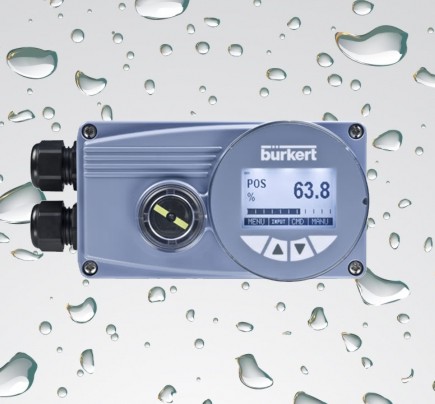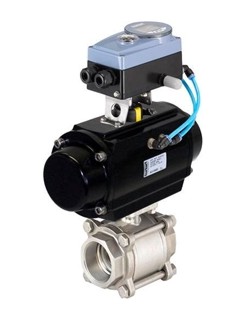 Burkert Valves > New innovative process valves that think for themselves.
Burkert Valves > New innovative process valves that think for themselves.
The current process valve has existed for longer than three hundred years, controlling the movement of liquids which are pressurized.
Ever since they were invented the simple valve's principle has stayed the same; however with the expanding automation of food, confectionary and drinks production the control process valves, therefore are that much more sophisticated.
Factory automation continues to head closer to far more accurate control more important information is also collected at machine level, so that you can give feedback for control loops as well as more detailed information for an increasing complex plant reporting software, management and visualisation.
Better control has led the way for, lower waste, better hygiene, improved efficiency as well as continuous processes. Yet in several programs the main emphasis is on the valve alone. More and more clever and powerful field control products are enabling valves to communicate with each other as well as working individually towards a significantly complicated parameters and set of rules. When is centralised control appealing and just how can decentralised control be used to enhance process systems? Automatic process valves, based on their structure and size could be ‘piloted’ a pressurised air supply or even pressure from the medium being controlled could be utilized to activate the valve, or alternatively there is an exterior (usually an hydraulic/pneumatic cylinder on bigger valves or an electric ball screw) or an electric solenoid.
Automatic process valves, based on their structure and size could be ‘piloted’ a pressurised air supply or even pressure from the medium being controlled could be utilized to activate the valve, or alternatively there is an exterior (usually an hydraulic/pneumatic cylinder on bigger valves or an electric ball screw) or an electric solenoid.
Normally they are attached to a PLC or an electronic controller which runs on a routine or software program which can synchronise the operation and sequence of the process valves that has the ideal flow, pressure and mixing needed of the fluid being controlled. Should you have a compressed air supply, piloting the valves could be the best choice also there are a few revolutionary options available to hook up great number of pneumatic control air lines to manage valve manifold blocks inside a sanitary setting. For instance Burkerts new AirLINE Quick interface, which gives a dependable, small and time- saving solution for straight installation of valve islands and automation equipment straight into a stainless steel control cabinet, ideal for food-grade wash-down environments.
If you need to connect much bigger quantities of process valves, which generally are needed in higher densities for continuous process programs-usually providing fluids for example ingredients and even CIP process in confectionary production- after that distributed control approach could be more desirable. Making use of fieldbus protocols for example Profibus, Devicenet and ASI permits single valves to become attached employing just a few cables. This is a remedy that was developed by Burkert allowing process valves at a range of suppliers to become managed centrally or given a level of independence. Burkerts 8681 control head gives universal fitting onto other brands of hygienic valves: individual seat valves, double-seat, mix-proof as well as quarter turn ball and butterfly valves and they possess straight stainless steel actuators.
Burkert 8681 works with a complete range of fieldbus communication networks, it also available in a strong enclosure that is rated up to IP67, therefore allowing it to be cleaned and washed safely. For the final layer of distributed control, many process valve automation applications can now dispense entirely with the control cabinet, bringing true process automation down to valve level.
Burkerts 8793 controllers are designed to cut costs in processing applications by enabling a systems engineer to change a complete control case with a single controller that has a built-in backlit display and keypad. The pricing of individual housing, stand fitted plc, I/O, cabling, power supply, HMI etc could be swapped out for a single tiny control unit which could be installed on or close to the process valve.
For more information on the new range of Burkert 8793 range of controller or any of the full range of Burkert fluid control systems contact us at Electroquip.
